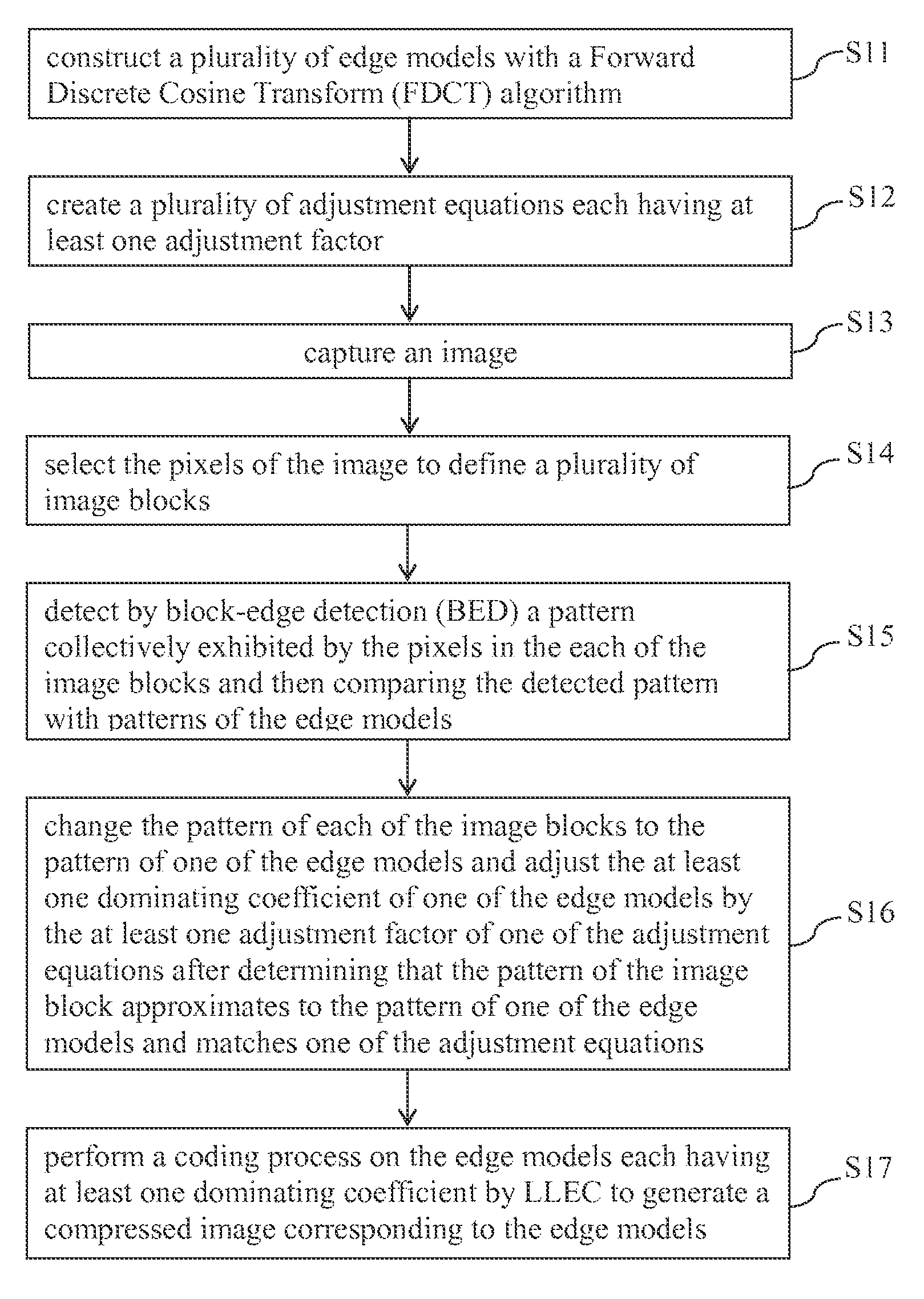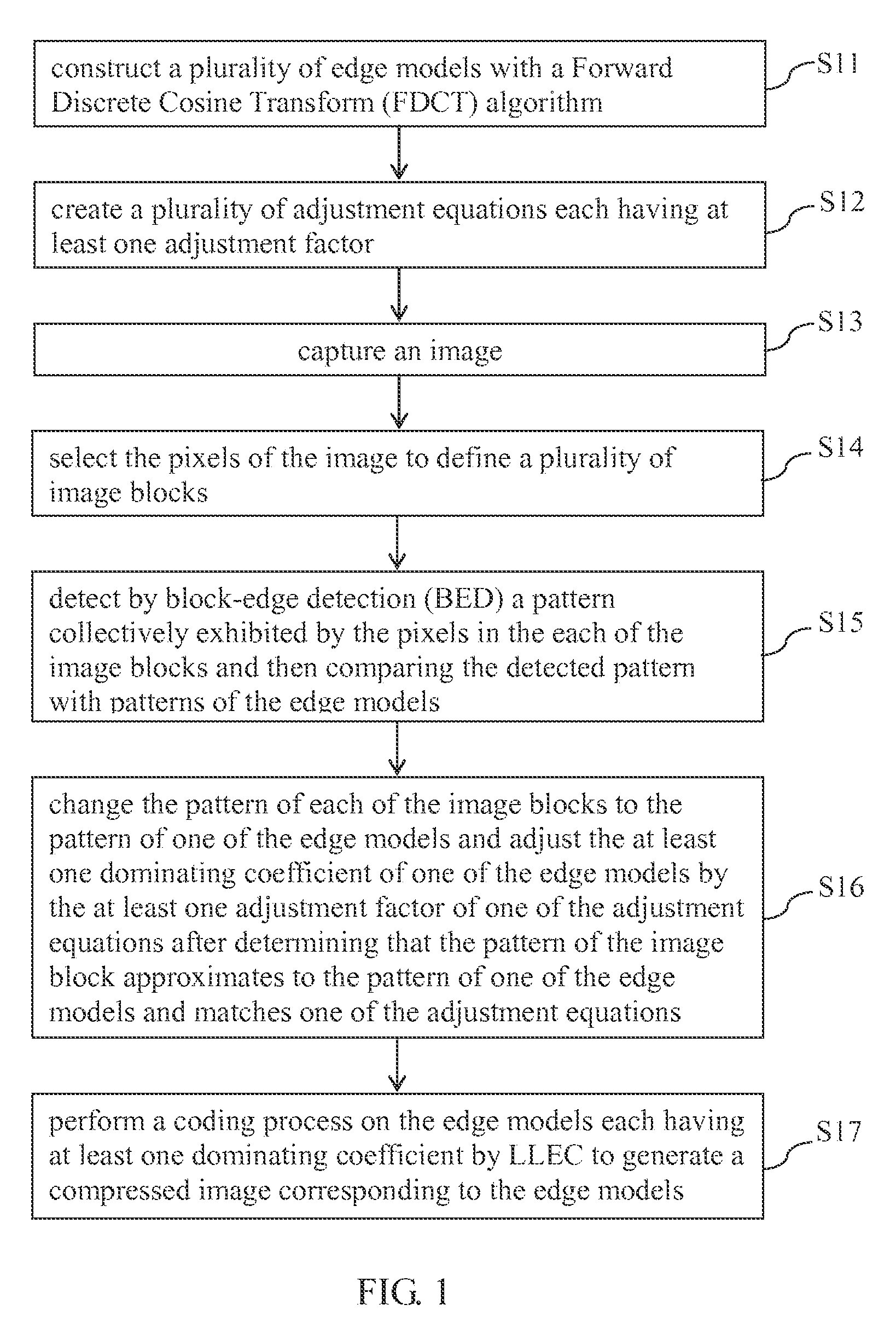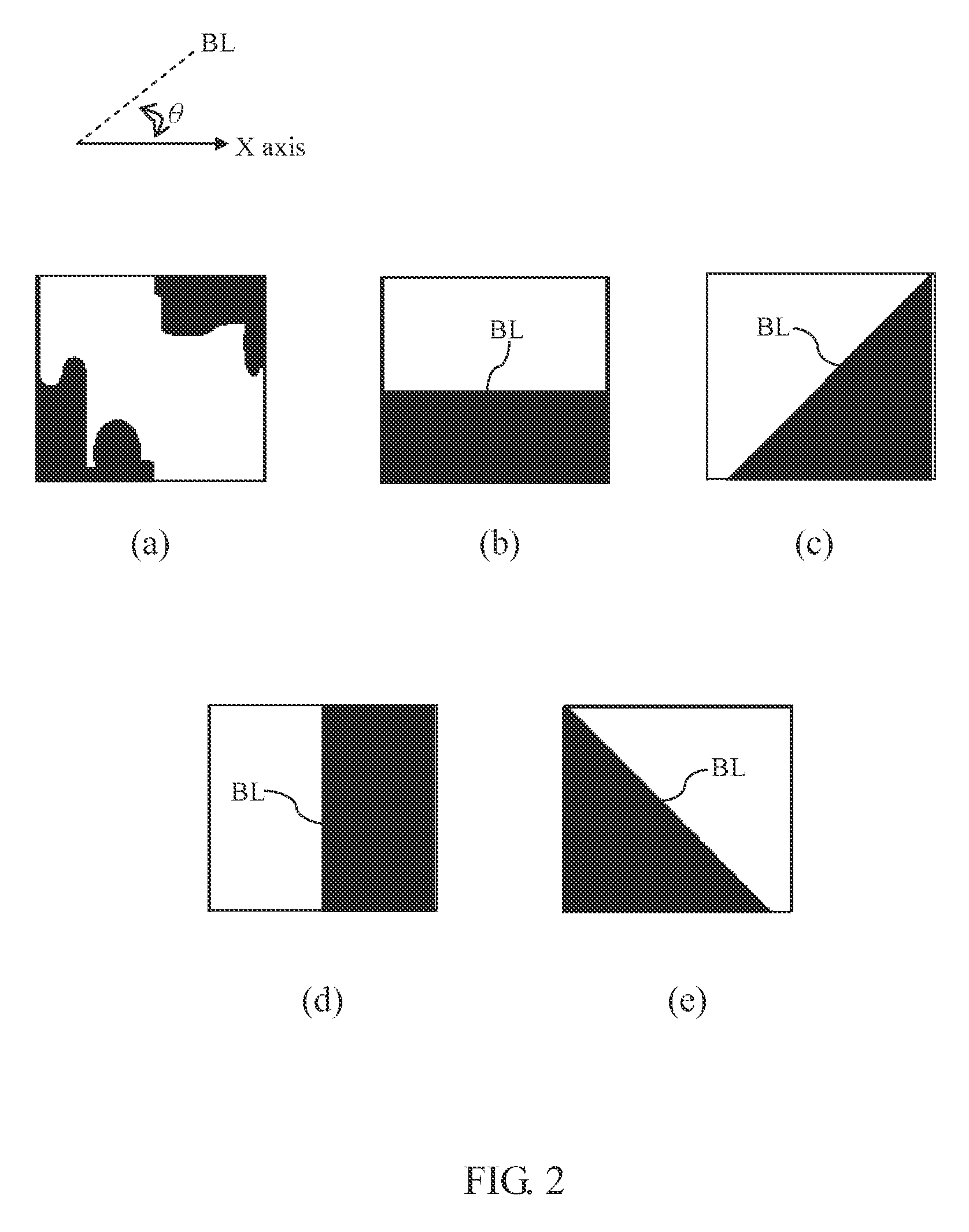Embedded system using image coding method
a technology of embedded systems and image coding, applied in the field of embedded systems using image coding methods, can solve the problems of inability to efficiently perform dct in embedded systems with a low processing speed and a small-capacity memory, inability to compress images, and inability to operate personal computers, etc., to achieve easy compression of images, low memory usage, and simple comparison
- Summary
- Abstract
- Description
- Claims
- Application Information
AI Technical Summary
Benefits of technology
Problems solved by technology
Method used
Image
Examples
Embodiment Construction
[0018]Referring to FIG. 1, there is shown a block diagram of the process flow of an image coding method according to an embodiment of the present invention.
[0019]The process flow of the image coding method starts with step S11 in which a plurality of edge models is constructed with a Forward Discrete Cosine Transform (FDCT) algorithm. Each of the edge models matches at least one dominating coefficient. The dominating coefficients include positive integers and zero.
[0020]Referring to FIGS. 2(a)-(e), for example, the edge models are each defined with a boundary line BL between a black region and a white region, and the included angle θ between the boundary line BL and the x-axis direction. FIG. 2(a) illustrates a no-edge model (hereinafter referred to as the “first edge model”.) FIG. 2(b) illustrates a 0°-edge model (hereinafter referred to as the “second edge model”.) FIG. 2(c) illustrates a 45°-edge model (hereinafter referred to as the “third edge model”.) FIG. 2(d) illustrates a 9...
PUM
 Login to View More
Login to View More Abstract
Description
Claims
Application Information
 Login to View More
Login to View More - R&D
- Intellectual Property
- Life Sciences
- Materials
- Tech Scout
- Unparalleled Data Quality
- Higher Quality Content
- 60% Fewer Hallucinations
Browse by: Latest US Patents, China's latest patents, Technical Efficacy Thesaurus, Application Domain, Technology Topic, Popular Technical Reports.
© 2025 PatSnap. All rights reserved.Legal|Privacy policy|Modern Slavery Act Transparency Statement|Sitemap|About US| Contact US: help@patsnap.com



